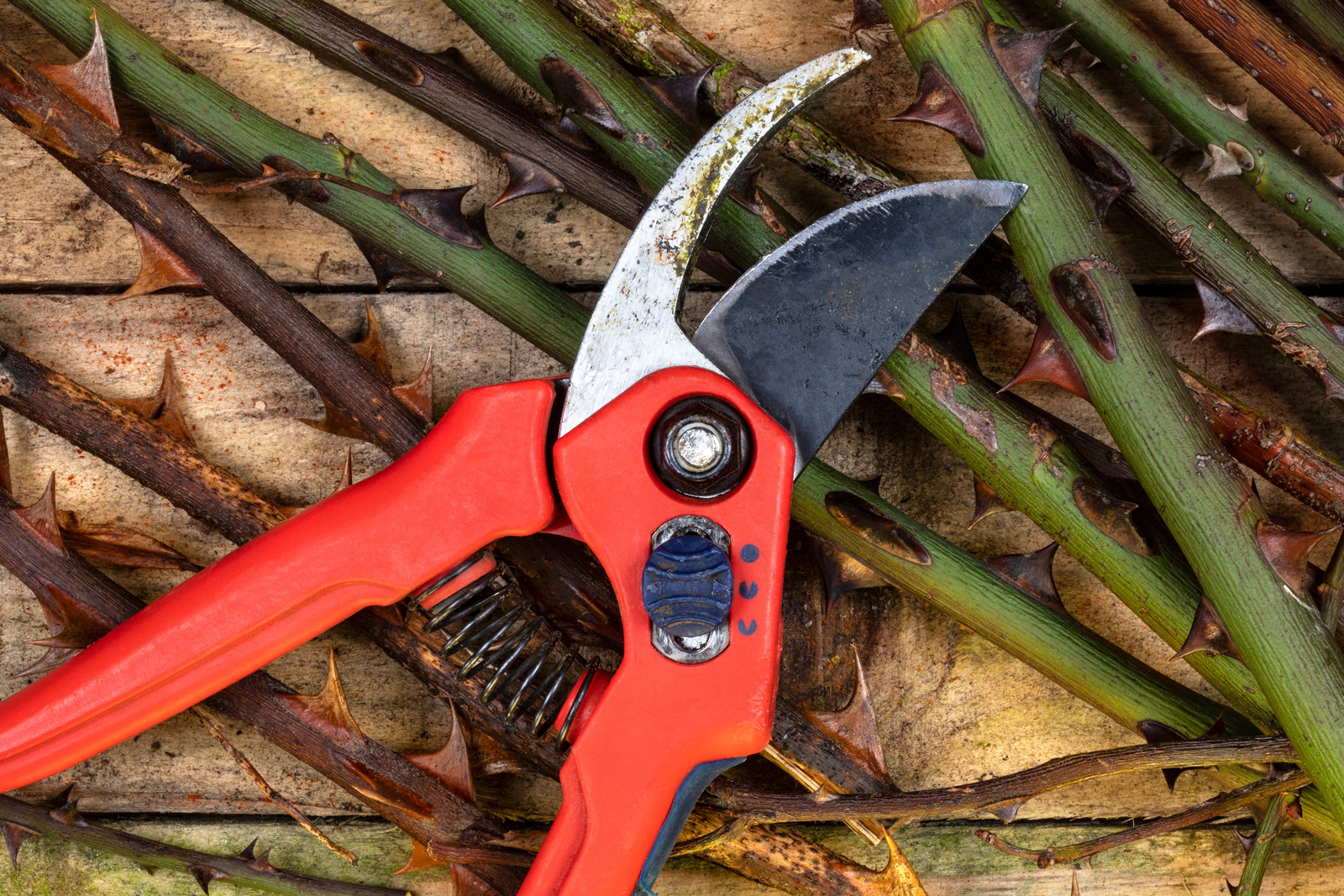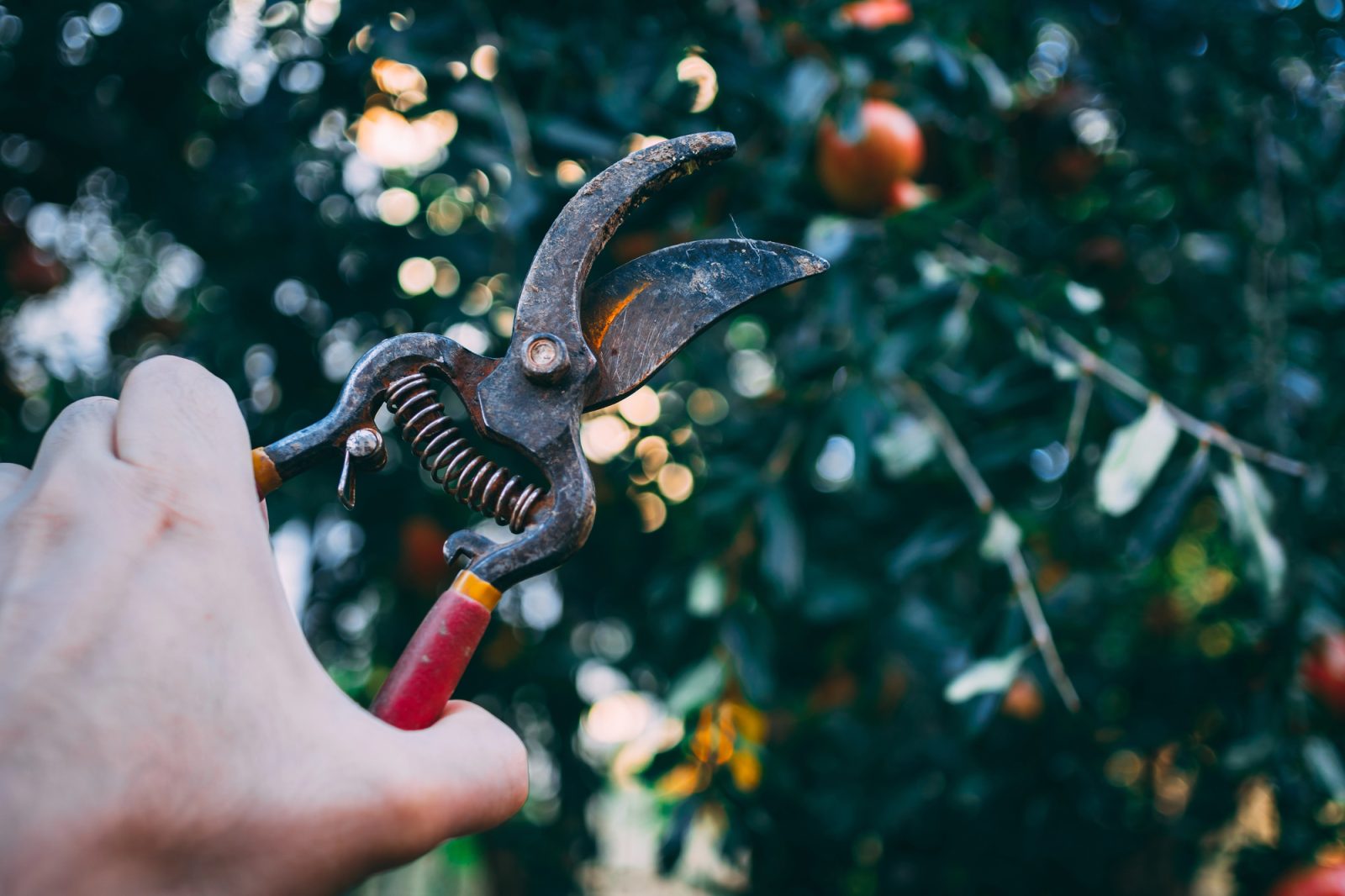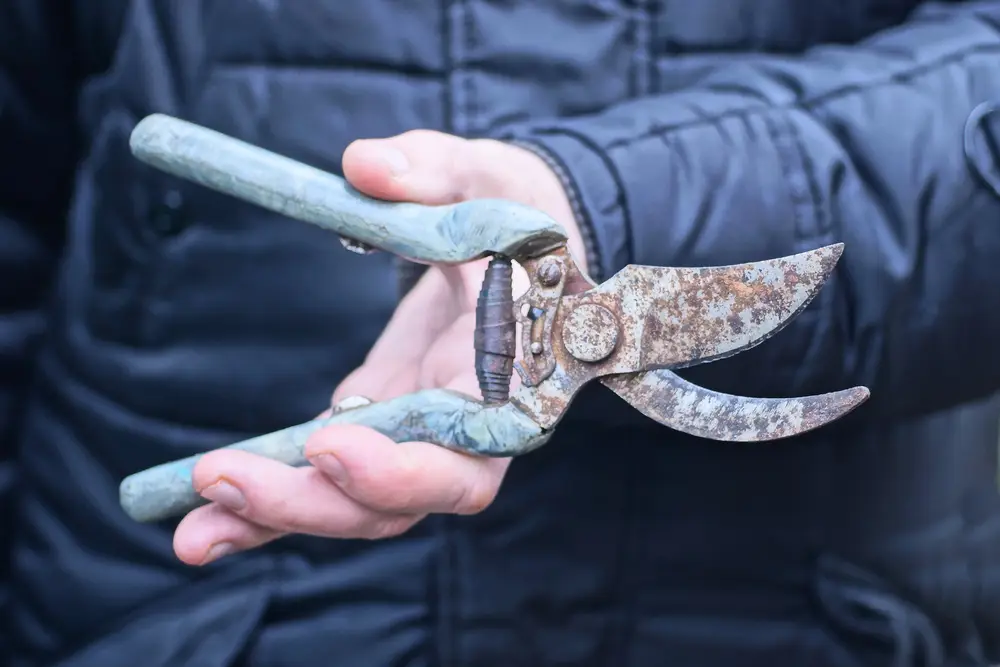Do I Need to Clean and Maintain My Pruning Shears?
In short—yes, you do. It is essential to clean and maintain your pruning shears (or secateurs), not just to keep them working well, but also to prevent the spread of plant diseases and stop rust from developing.
Your garden tools work hard, especially during pruning season. Giving them a bit of TLC can help them last longer, cut cleaner, and protect your plants from bacteria and fungal infections.

Why Cleaning Your Pruning Tools Matters
Every time you make a cut—especially on diseased or damaged branches—you risk picking up pathogens. If your secateurs are dirty, you could be spreading fungal spores, bacteria, or viruses from plant to plant without realising it.

Clean tools help:
- Prevent disease transfer between plants
- Make cleaner cuts, which heal more quickly
- Extend the life of your tools
- Reduce rust and sap build-up
How Often Should You Clean Your Shears?
Think of it like brushing your teeth. A little attention regularly makes a big difference in the long run:
- Quick wipe-down: After each use
- Thorough clean and disinfect: Weekly or after pruning diseased plants
- Sharpen and oil: Monthly or as needed depending on usage
How to Clean Your Pruning Shears in 5 Easy Steps
- Wipe off debris and sap
Use a clean cloth or a soft brush to remove any dirt, sap or plant residue. - Wash with warm, soapy water
Give them a good scrub with washing-up liquid. Dry thoroughly with a towel. - Disinfect the blades
Use isopropyl alcohol (rubbing alcohol), a disinfectant spray, or a diluted bleach solution (1 part bleach to 9 parts water). Let them air dry or wipe down with a clean cloth. - Sharpen the blades
Use a sharpening stone or tool designed for secateurs. Always sharpen in the same direction as the blade’s bevel. - Oil moving parts and blades
Apply a few drops of tool oil, 3-in-1 oil, or even vegetable oil to prevent rust and keep joints moving smoothly.

Bonus Tip: Store Them Properly
Once clean, store your pruning shears in a dry place—ideally indoors or in a sealed toolbox or shed. Avoid leaving them out in the rain or in damp conditions, which encourages rust.
Hang them on a hook or keep them in a canvas tool roll to protect the blades.
What About Rusty Secateurs?
If your pruning shears are already showing signs of rust, don’t panic. You can remove light rust with wire wool, fine sandpaper or a rust eraser. For more stubborn rust, soak the blades in white vinegar for a few hours, scrub off the rust, then rinse, dry and oil them.

In Summary
Clean tools mean clean cuts—and healthier plants. A few minutes of maintenance after each gardening session can help your secateurs last for years and keep your plants in peak condition.
Whether you’re pruning roses or cutting back hedges, sharp, rust-free blades are key. Treat your tools well, and they’ll repay you every time you’re out in the garden.
For further reading on taking care of your tools, see this guide by The Royal Horticultural Society (RHS): Cleaning and Sharpening Garden Tools
Need Help with Garden Maintenance?
If your garden’s getting out of hand or you’d just rather leave the pruning to the pros, we’ve got you covered. At Cowen Landscapes, we offer professional garden maintenance and expert care to keep your green spaces healthy and tidy all year round.
Get in touch today with your gardening questions or if you have a landscaping or gardening project in mind.